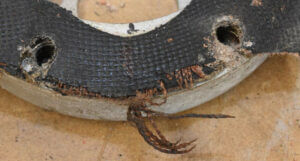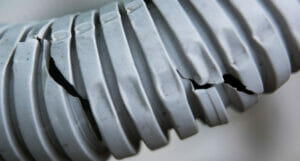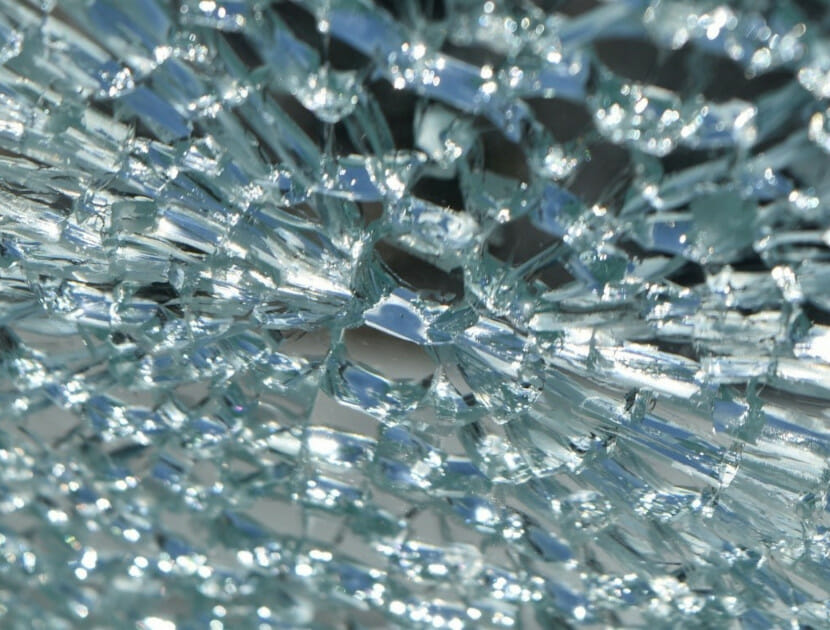Glass & Ceramics
Ceramics and glasses are two very different materials but they have a wide range of uses and can both be utilised in domestic settings, in architectural uses and in large or small scale manufacturing applications.
At Hawkins we have investigated numerous personal injury claims involving glass, from bottles cracking and exploding, to injury caused by fractured glass tables. In the last twenty years architectural glass & glazing systems have become more and more popular. Whilst such glass can be visually striking, it can be very costly if it breaks, particularly because the logistical challenges of doing so, can far outweigh the cost of the glass itself.
We have examined numerous glass fractures with causes such as building movement, thermal bridging issues, edge defect weakening ‘bulletproof’ glass and inclusions.
Inclusions are a common cause of glass fracture that we investigate. Inclusions are incorporated into the glass structure during manufacture and can be identified at the manufacturing stage if the glass is put through additional heat soaking stages. However, there is currently no requirement to carry out these steps and as such inclusion bearing glasses are regularly sold to market. The most common type of inclusion is known as nickel sulphide (NiS), however, these are by no means the only type and detailed examination is required to categorically prove the identity of any such inclusion. Thermally toughened glasses are the most susceptible to such inclusions (due to the stress state the glass is in) and they can fail catastrophically (generally into small cubic or rhombohedral pieces). This can prove problematic if the glass is not laminated; fragments of glass can ‘rain down’ to the ground below. Every glass fracture case is unique and Hawkins can provide an in-depth examination to ascertain the precise cause of fracture and provide guidance to prevent further issues.
Ceramics are often considered alongside glass, and indeed glass can be considered as a type of ceramic. In a similar way to glass, ceramics can be utilised in a huge range of applications from the mundane to refractory materials, electrical appliances, bio-applications, turbine engines and storage of nuclear waste to name but a few. Ceramics are, generally speaking, brittle and can fracture for numerous reasons. Each case is unique and will require in-depth analysis to understand the fracture mechanism(s) and cause for any such failure. Hawkins has investigated fractures of ceramics utilised in many applications such as drinking mugs, industrial bio-mass boilers, refractory bricks and insulators for railway use.
Our experts can help provide insight into material selection and testing, failure analysis, as well as a thorough understanding of the relevant guidance and standards that have, or should have, been used.
WHY APPOINT A FORENSIC INVESTIGATOR?
Our expert materials scientists and engineers have years of experience identifying the cause(s) of complex failures and we have the knowledge to tell you how and why failure has occurred.
- We provide both in-depth onsite investigations and ‘desktop’ studies to fully understand the circumstances surrounding the incident and determine what caused it.
- We have laboratories and equipment designed specifically to examine and test a wide range of glass and ceramics.
- We will help you to determine if an incident could have been avoided and what risk mitigation strategies are available to prevent a similar incident occurring. This is of particular interest in developments where numerous glass failures are seen, and there is an ongoing risk to public.
- We provide consultancy advice to prevent similar events happening again in the future.
- If removing a risk entirely is unavoidable, we advise on steps to take to mitigate the risk and reduce the potential damage resulting from an incident.
- We advise on servicing, maintenance and repair regimes.
- We support subrogation/recovery efforts.
- We help you to make decisions regarding where legal responsibilities/liabilities lie.
- We help you to defend wrongful claims.
- We produce reports suitable for Court and litigation.
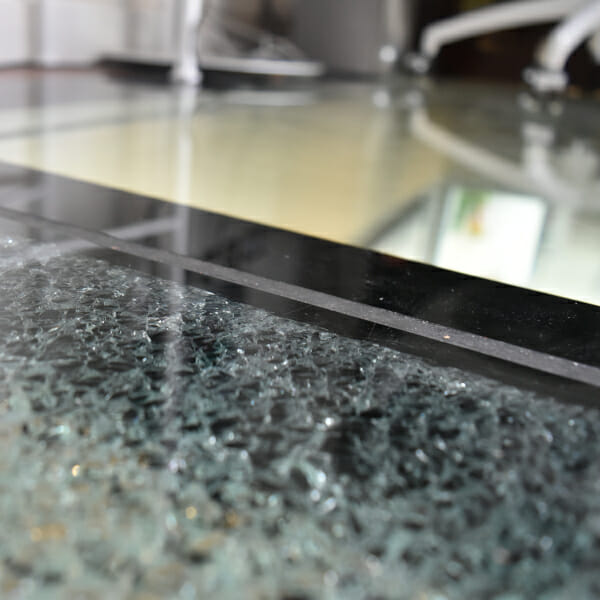
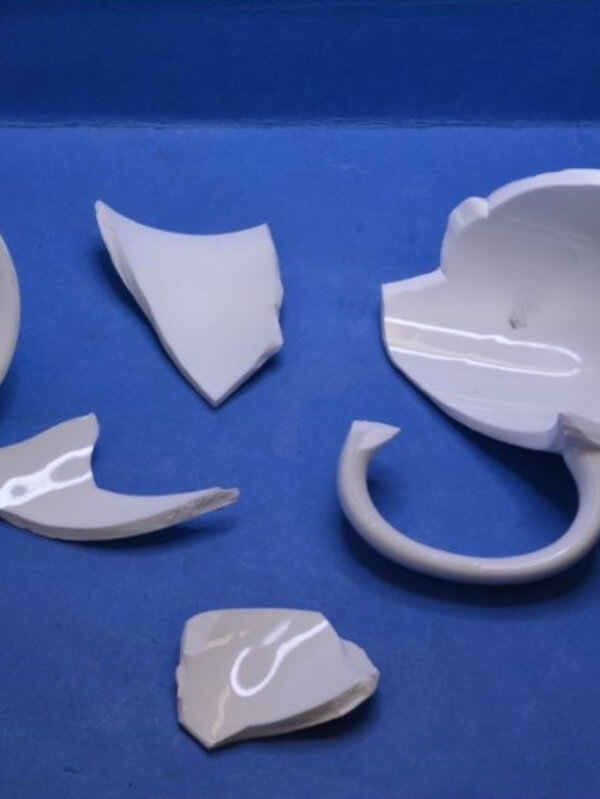

Examples of Typical cases
- Poor design of window casings
- Thermal bridging issues in glass installation
- Manufacture/installation defects introduced to glass edges
- Manufacturing defects such as inclusions
- Fracture of drinking mugs causing personal injuries
- Degradation of ceramics caused by environmental or installation conditions
- Failure of refractory and insulating ceramic products
- Poor manufacturing processes for both ceramics and glass
- Poor materials selection for both ceramics and glass
- Poor design of parts
- Personal injury cases
Our services are flexible and can be tailored to your needs, depending on the scale and urgency of the investigation. Our services range from a free consultation through to a full investigation including a court-compliant report for the support of legal action.
If you would like to discuss how we can assist you please fill out our enquiry form or call us for a free consultation.
HOW DOES HAWKINS INVESTIGATE THE FAILURE OF GLASS AND CERAMIC MATERIALS?
1
Consultation
We like to speak to our clients before conducting any work so that we can understand and plan how we can add the most value to any case. We will discuss your requirements, determine what information is already available and who the best people are to contact to fully understand the background of the case. We are also happy to provide you with a cost estimate and time scale to conduct a forensic investigation.
2
Inspection
If required and with your agreement, we will arrange a site visit and wherever possible, we will retain the incident parts for examination in our laboratory, where we use a range of equipment, tools, and tests to determine the cause of failure. If necessary, we can carry out visits to the processing and manufacturing plants to get a full insight into how the faulty products are made.
3
Conclusion
Once our examination is complete, we will discuss our findings with you and prepare a report containing a detailed account of our investigation, conclusions, and where appropriate, further work or advice.
Case Study
Breaking point…
Hawkins frequently examine fractured glass panes, including structural glass.
Whilst fracture by inclusion is certainly a common way for glass to shatter, it is by no means guaranteed that seeing the well known ‘figure of 8’ pattern in glass means that it is an inclusion. Only close examination of the fracture origin can reveal the true cause. For example, glass used as a roofing material was found to have cracked (when accessed by drone) but close examination revealed that the fracture was due to poor installation. Hawkins identified that the glass was resting on screws, causing cracks to grow over time before a critical crack length was reached, resulting in the pane of glass fracturing spontaneously and a ‘figure of 8’ pattern forming in the glass.
We have also examined the failure of ceramic cups which were issued as part of a promotion for a food product. Nine cups were reported to have broken before the whole shipment was recalled. Forensic investigation of the cups using a variety of techniques such as scanning electron microscopy (SEM) and Fourier transform infrared spectroscopy helped to identify the underlying manufacturing issues.

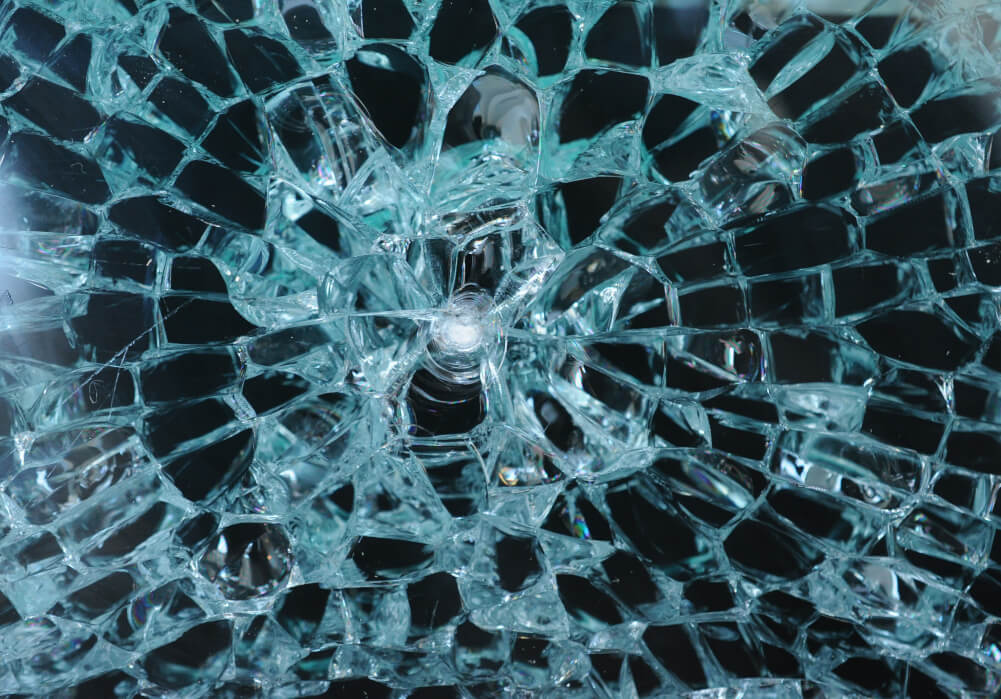
SPEAK TO ONE OF OUR EXPERTS
Related areas of expertise
Composites
A composite material is any multicomponent material that contains two or more distinct constituents or phases, i.e. it is made from a combination of two or more different types of constituent material. Perhaps the most familiar examples in modern engineering are glass or carbon fibre reinforced plastic (GFRP or CFRP).
Plastics/Polymers
Polymers, or plastics as they are more commonly known, are used in all aspects of modern-day life: from pipework to paint coatings, textile fibres to automotive components and adhesives to hot water bottles. Plastics are imbedded into our way of life, and failure of these materials can lead to personal injury, escapes of water, loss of earnings, to name just a few outcomes.
Glass & Glazing Systems
Architectural glazing has become increasingly prominent in commercial, retail and residential developments over the last 30 years. Hawkins has extensive experience on cases in this area and are well equipped to rapidly investigate a full range of possible issues.

